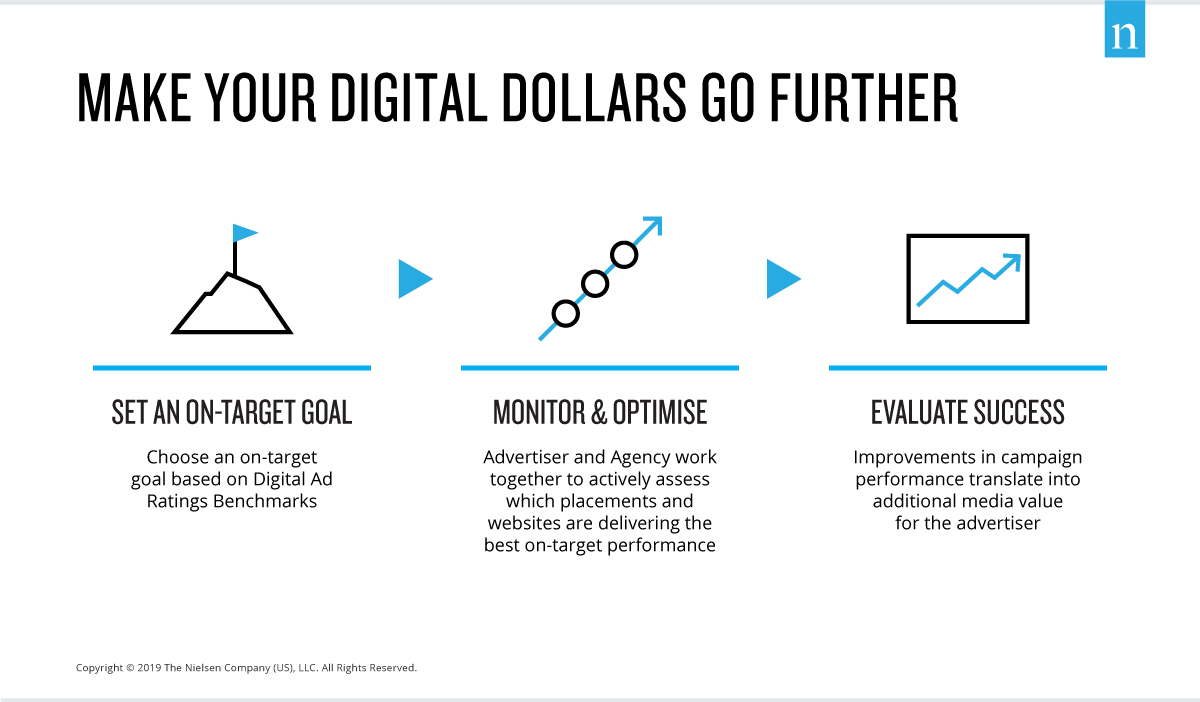By Tony Boyte, Director, Nielsen New Zealand
According to Nielsen’s 2018 CMO Report, 74% of CMOs today are not very confident in their ability to measure the performance of their digital campaigns. In the latest Nielsen Digital Ad Ratings Benchmarks Report, 40% of digital ad impressions targeted at 25-54 year olds in New Zealand did not hit their target audience. This would be equivalent to a TV-only advertising strategy that aims to reach potential home buyers by placing 60% of its ad spots at 8pm, during The Block, and the other 40% on at 4pm, while Fanimals is airing.
There has (rightly) been much focus on addressing hygiene issues in digital audience delivery such as invalid traffic and viewability and the market has been working to account for and correct for these issues. However, even after excluding impressions lost to hygiene issues, marketers still face 40% wastage of their digital investment due to impressions served off-target and this is where the next battleground is in audience delivery.
ACCORDING TO NIELSEN’S 2018 CMO REPORT, 82% SAID THAT HAVING REACH AND FREQUENCY METRICS IS THEIR NUMBER ONE CAPABILITY IN THEIR MARKETING TOOLBOX. NO. 1 AHEAD OF AD VIEWABILITY AT 73%.
Today, despite the multitude of digital analytics available, reach still remains an important campaign performance measure. According to Nielsen’s 2018 CMO Report, 82% said that having reach and frequency metrics was their number one capability in their marketing toolbox. Reach and frequency ranked ahead of ad viewability at 73%. This indicates that the fundamentals of marketing remain at the core. If an advertiser pays for an audience, they expect that audience to be delivered and also expect to see validation of delivery of that audience.
The ever-evolving complexity of the digital ecosystem presents a challenge to advertisers. In the course of an average week, 90% of New Zealanders are accessing the internet from two or more locations – with 78% accessing from two or more devices. The outcome: multiple users, accessing multiple devices, from different locations, all throughout the day. With this in mind, how do you know who was exposed to your campaign; and how can you be certain that they had ample time to view the campaign? As the measurement of digital activity becomes even more complex, the scrutiny marketers are placing on the effectiveness of digital campaigns continues to ramp up.

With the rise of different platforms, more focus is on digital versus traditional campaign effectiveness, and increased scrutiny over the ROI for digital campaigns – the industry is now at the tipping point where independent measurement will become the norm for transacting in the digital environment.
So what are we seeing in other markets where this has already taken place?
More robust conversations: Advertisers and their agencies will use benchmarks to form audience guarantees and to aid in their negotiations, as they do with their buying approach for non-digital advertising mediums.
Increased accountability: To ensure that advertisers get what they paid for, media owners and advertisers can validate against the actual delivery. For campaigns that don’t reach their on-target % benchmark or audience delivery guarantee, agencies and advertisers will ask for ‘make goods’ and also create whitelists of websites and placements that are most likely to deliver them the audiences they are paying for.
Reduced wastage: Advertisers will see their digital dollars go further than before with improved digital campaign efficiencies, as they reach their expected audiences, and deliver the expected value from digital campaigns.



